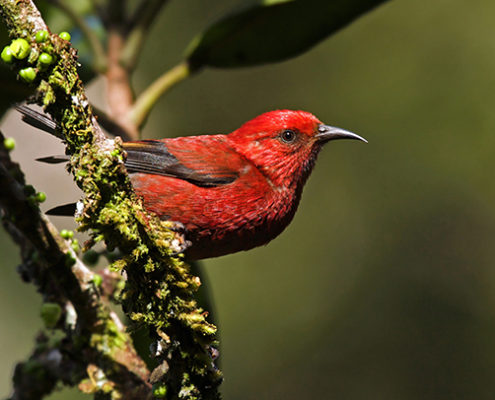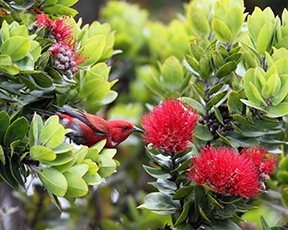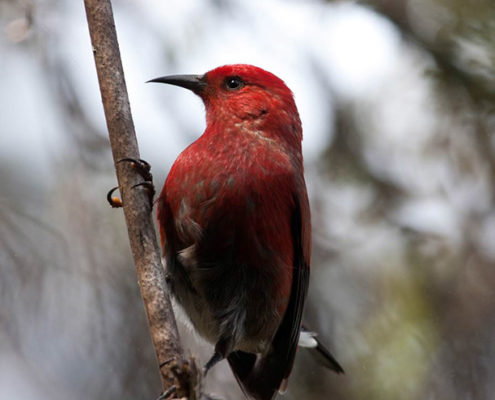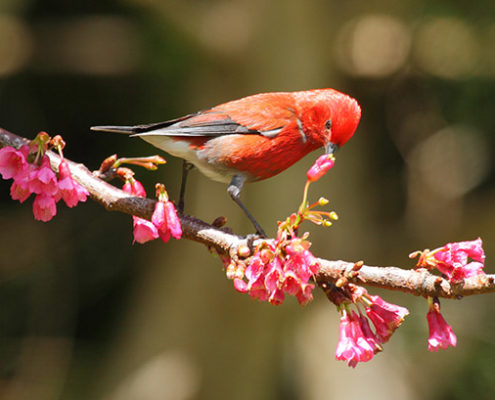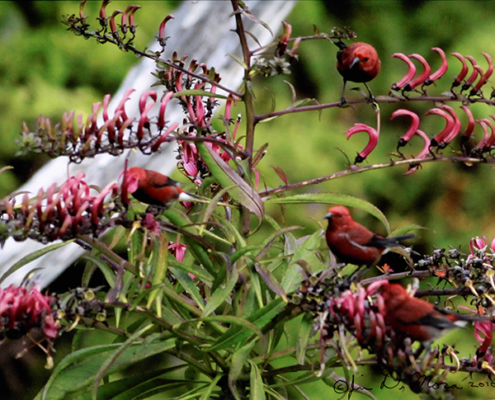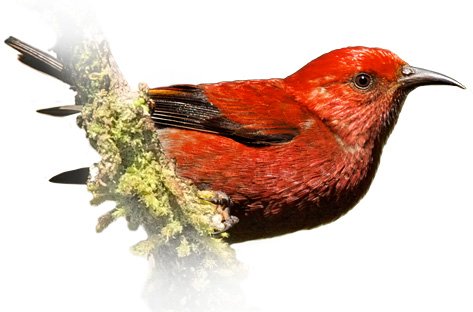
‘Apapane
Himatione sanguinea
The ‘apapane is a common honeycreeper, (population estimates of 87,613 (Paxton et. al. 2020)), and can be found on all of the major Hawaiian islands. Adult males and females are similar in appearance, with crimson red feathers, conspicuous white feathers under their tails, black wings and tail, and a black downward curving bill. Juveniles appear duller, and can range from a grayish-brown to yellow-brown in color; they also have white feathers under their tail.
‘Apapane are primarily nectivorous, feeding on nectar from flowers. They are seen mostly in ‘ōhi’a trees, and are considered an important ‘ōhi’a pollinator. ‘Apapane also forage on other flowering trees, and glean insects in the outer canopy. The breeding season lasts from February to June, and females lay 2 to 4 eggs. ‘Apapane have a very large vocal array, including at least six different calls and ten songs. Noises they make include raspy notes, squeaks, clicks, trills and whistles.
Historically, the ‘apapane was common on all major Hawaiian islands, but is currently restricted to native forest habitats at higher elevations. In those habitats, the ‘apapane is common on Hawai’i, Maui and Kaua’i, and becoming uncommon on O’ahu.

